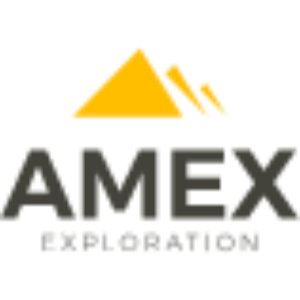Amex Exploration Announces Metallurgical Results with Greater Than 95% Gold Recovery from Major Gold Zones at Perron
Montreal, Quebec--(Newsfile Corp. - March 18, 2024) - Amex Exploration Inc. (TSXV: AMX) (FSE: MX0) (OTCQX: AMXEF) ("Amex" or the "Company") is pleased to report the metallurgical test work from the Denise, Gratien, Grey Cat and Team gold zones (Figure 1). The overall gold recoveries achieved (gravity + flotation + leaching) tests showed excellent recovery >
As a reminder, on November 11, 2020, Amex reported metallurgy results from High Grade Zone (HGZ), where all three composites returned better than
Jacques Trottier, PhD, Executive Chairman of the Board of Amex Exploration commented, "This metallurgical work is important data for the upcoming Preliminary Economic Assessment study that we plan to release in the coming months. I am pleased to see such incredibly high gold recoveries from each of our major gold zones defined to date. Better than
The following sections are extracts from the test work obtained from SGS Laboratories, which have been verified by authorized metallurgists.

Figure 1. Geological map of the Perron Project, showing each of the significant mineralized zones identified to date.
To view an enhanced version of this graphic, please visit:
https://images.newsfilecorp.com/files/2667/202075_4af20bf764c5793b_002full.jpg
Table 1: Final results (gravity + flotation + leaching) from the metallurgical test work completed from multiple gold zones across the Perron property.
| Recovery | ||||||
| Gravity | Gravity + Flot | Gravity + | Gravity | Gravity + Flot | Gravity + | |
| Flot + CN | Flot + CN | |||||
| Test # | Au | Au | Au | Ag | Ag | Ag |
| % | % | % | % | % | % | |
| GC-HG | 41.7 | 84.1 | 97.4 | 45.6 | 51.5 | 60.8 |
| GC-MHG | 57.2 | 90.2 | 97.9 | 7.2 | 22 | 37.2 |
| G-LG | 72.1 | 94.9 | 98.9 | 14.2 | 28.7 | 42.6 |
| GA-HG | 66.8 | 92.8 | 99.8 | 40.2 | 80.1 | 85.1 |
| GR-HG | 34.3 | 95.5 | 99.7 | 17.9 | 77.2 | 81.6 |
| WD-HG | 69.9 | 93.5 | 98.8 | 21.3 | 36.8 | 49.1 |
| WD-MG | 66.3 | 93.3 | 98.9 | 66.2 | 80.9 | 87.1 |
| WD-LG | 14.0 | 74.3 | 94.6 | 3.0 | 14.8 | 31.3 |
| TZ-LG | 57.3 | 92.4 | 99.1 | 20.6 | 39.9 | 51.5 |
| TZ-HG | 44.8 | 87.4 | 98.4 | 17.5 | 32.3 | 45.5 |
| TZ-MG | 57.1 | 90.2 | 99.2 | 20.6 | 39.9 | 51.6 |
| *Legend GC-HG = Grey Cat - High Grade GC-MHG = Grey Cat - Medium High Grade G-LG = Gratien (Andesite) - Low Grade GA-HG = Gratien Andesite - High Grade GR-HG = Gratien Rhyolite - High Grade WD-HG = Western Denise - High Grade WD-MG = Western Denise - Medium Grade WD-LG = Western Denise - Low Grade TZ-LG = Team Zone - Low Grade TZ-HG = Team Zone - High Grade TZ-MG = Team Zone - Medium Grade | ||||||
Sample Preparation
Thirteen composites' samples of half core were delivered. Three of the first samples (Grey Cat Zone) were combined to have more material for the test program, then reducing the composites samples for tests to eleven (Table 1). Each sample was stage crushed with a combination of jaw, cone and roll crusher to
Head Characterization
Gold Analysis by Screened Metallics
The 1 kg charges from each sample were submitted for gold analysis using the screened metallics protocol. This method is recommended when the ore is suspected to contain coarse, gravity recoverable gold. The method involves several stages of pulverizing and screening the pulverized sample at 150 mesh (106 µm) until approximately 20-30 g of material remains in the screen oversize. The screen oversize and duplicate samples of the final combined screen undersize are submitted for chemical analysis and the head assay of the sample calculated from the relative distribution of the screened fractions. The results shown in Table 2 below indicate gold grades ranging from 0.46 g/t to 11.7 g/t, and high gravity recoverable gold, greater than
Table 2: Head Assays.
| Sample | Head Au (g/t) | +150mesh | -150mesh | % Distribution | ||||
| Wt. % | g/t | Wt. % | g/t Au A | g/t Au B | +150mesh | -150mesh | ||
| GC-HG | 3.98 | 2.63 | 18.7 | 97.4 | 3.76 | 3.41 | 12.3 | 87.7 |
| GC-MHG | 0.52 | 2.56 | 3.97 | 97.4 | 0.67 | 0.36 | 3.49 | 96.5 |
| G-LG | 1.27 | 3.63 | 7.70 | 96.4 | 1.21 | 1.00 | 16.1 | 83.9 |
| GA-HG | 11.7 | 2.62 | 226 | 97.4 | 5.78 | 6.16 | 50.3 | 49.7 |
| GR-HG | 5.15 | 1.78 | 44.8 | 98.2 | 4.33 | 4.54 | 15.4 | 84.6 |
| WD-HG | 2.50 | 1.62 | 87.9 | 98.4 | 1.88 | 0.88 | 45.7 | 54.3 |
| WD-MG | 8.11 | 3.38 | 138 | 96.6 | 3.67 | 3.45 | 57.6 | 42.4 |
| WD-LG | 0.46 | 3.38 | 0.44 | 96.6 | 0.43 | 0.49 | 3.38 | 96.6 |
| TZ-LG | 0.91 | 4.12 | 8.70 | 95.9 | 0.63 | 0.52 | 39.4 | 60.6 |
| TZ-HG | 1.36 | 3.15 | 6.46 | 96.9 | 1.26 | 1.12 | 15.3 | 84.7 |
| TZ-MG | 2.49 | 3.27 | 34.4 | 96.7 | 1.42 | 1.39 | 45.4 | 54.6 |
Comminution Test Work
Bond Ball Mill Grindability Test
The bond ball mill grindability test was completed on each of the eleven samples. A summary of the test results is presented in Table 3. With bond work index (BWI) values ranging from 14.1 to 20.0 kWh/t, the samples were found to be moderately hard to hard compared to the SGS database.
Table 3: Bond Ball Mill Grindability Test Results.
| Sample ID | Mesh of Grind | F80 (µm) | P80 (µm) | Gram per Revolution | Work Index (kWh/t) | Hardness Percentile | Category |
| GA-HG | 100 | 2319 | 117 | 1.66 | 14.3 | 50 | Medium |
| GC-HG | 100 | 2454 | 115 | 1.08 | 20 | 93 | Very Hard |
| GC-MHG | 100 | 2476 | 114 | 1.22 | 17.9 | 84 | Hard |
| G-LG | 100 | 2389 | 114 | 1.34 | 16.6 | 76 | Hard |
| GR-HG | 100 | 2517 | 114 | 1.28 | 17.2 | 80 | Hard |
| TZ-HG | 100 | 2502 | 114 | 1.37 | 16.2 | 73 | Moderately Hard |
| TZ-LG | 100 | 2441 | 112 | 1.40 | 15.8 | 68 | Moderately Hard |
| TZ-MG | 100 | 2317 | 112 | 1.49 | 15.1 | 60 | Moderately Hard |
| WD-HG | 100 | 2471 | 111 | 1.55 | 14.5 | 52 | Medium |
| WD-LG | 100 | 2547 | 113 | 1.40 | 15.8 | 68 | Moderately Hard |
| WD-MG | 100 | 2471 | 109 | 1.57 | 14.1 | 48 | Medium |
Metallurgical Test Work
Gravity Separation
A single gravity separation test was completed on each composite, evaluating the potential for gravity recoverable gold and silver at a coarse primary grind size (P80 ranging from 184-416 µm) using a Knelson MD-3 concentrator. The Knelson concentrate was submitted for chemical analysis with the tailings subsampled for chemical analysis and flotation testing. The gravity test results are summarized in Table 4.
The Knelson concentrate represents the achievable gravity recovery and was able to recover 34 % to 72 % at gold concentrations of 381 g/t Au and 4711 g/t Au, showing that all samples were very amenable to the gravity separation process; except one sample with lowest grade showed
Table 4: Gravity Test Results.
| Sample | Product | Weight | wt. | Assays, g/t | % Distribution | ||
| g | % | Au | Ag | Au | Ag | ||
| GC-HG | Gravity Concentrate | 5.9 | 0.1 | 2092 | 407 | 42 | 46 |
| Gravity Tail | 5720 | 99.9 | 3.02 | < 0.5 | 58 | 54 | |
| Calculated Head | 5726 | 100 | 5.17 | 0.92 | 100 | 100 | |
| Direct Head | - | 100 | 2.71 | 0.9 | |||
| GC-MHG | Gravity Concentrate | 7.5 | 0.08 | 381 | 50 | 57 | 7 |
| Gravity Tail | 9689 | 99.9 | 0.22 | < 0.5 | 43 | 93 | |
| Calculated Head | 9696 | 100 | 0.51 | 0.54 | 100 | 100 | |
| Direct Head | - | 100 | 1.76 | 0.8 | |||
| G-LG | Gravity Concentrate | 14.2 | 0.15 | 499 | 57 | 72 | 14 |
| Gravity Tail | 9770 | 99.9 | 0.28 | < 0.5 | 28 | 86 | |
| Calculated Head | 9784 | 100 | 1 | 0.58 | 100 | 100 | |
| Direct Head | - | 100 | 2.24 | 0.8 | |||
| GA-HG | Gravity Concentrate | 9.2 | 0.09 | 4711 | 718 | 67 | 40 |
| Gravity Tail | 9835 | 99.9 | 2.19 | 1 | 33 | 60 | |
| Calculated Head | 9844 | 100 | 6.59 | 1.67 | 100 | 100 | |
| Direct Head | - | 100 | 4.22 | 0.9 | |||
| GR-HG | Gravity Concentrate | 5.6 | 0.11 | 1168 | 453 | 34 | 18 |
| Gravity Tail | 5071 | 99.9 | 2.47 |
Amex Expl
OTC:AMXEFAMXEF RankingsAMXEF Latest NewsAMXEF Stock Data | |||







